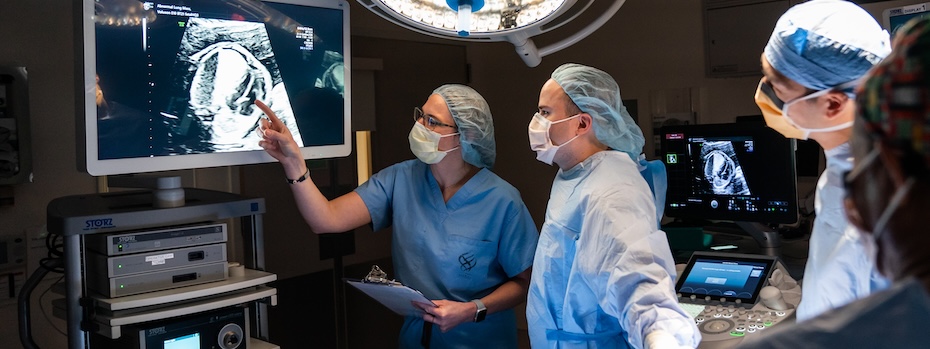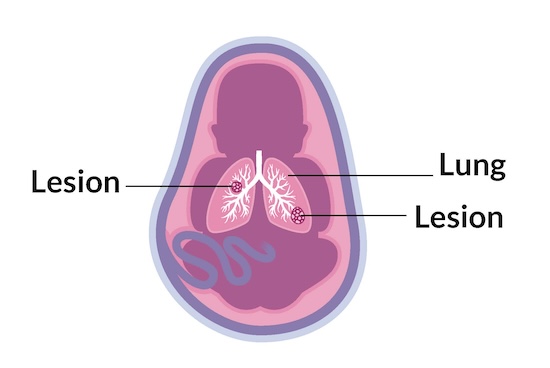Congenital Lung Lesions

We offer minimally invasive care before and after birth for congenital lung lesions, including congenital pulmonary airway malformation (CPAM).
What are congenital lung lesions?
Congenital lung lesions, or masses, can occur when the lungs don’t develop properly. Congenital means a condition or trait exists at birth.
Doctors aren’t sure what causes congenital lung lesions.
Congenital lung lesions, also called fetal lung lesions, include:
- Congenital pulmonary airway malformation (CPAM): Abnormal, nonworking tissue grows in the lung or lungs.
- Bronchopulmonary sequestration (BPS): Abnormal, nonworking lung tissue grows inside or outside the lungs without any connection to the lung’s airways.
- Bronchial atresia: An airway (bronchus) between the windpipe and the lungs doesn’t develop properly.
- Congenital lobar emphysema (CLE): The airways are blocked. Air enters the lungs but doesn’t leave. That causes too much inflation in one or more of the lung’s lobes.
Diagnosing congenital lung lesions
Lung lesions

You probably won’t notice symptoms of a congenital lung lesion while you are pregnant.
Congenital lung lesions are often found around the 20th week of pregnancy, when an anatomy ultrasound is usually done. This ultrasound looks at how the baby’s body parts and organs, including the lungs, are forming. Signs of lesions may include tissue that looks abnormal, such as fluid-filled spaces (cysts).
For patients
Appointments: Please ask your provider for a referral.
Questions: Call 503-418-4300.
Location
Kohler Pavilion, seventh floor
808 S.W. Campus Drive
Portland, OR 97239
Free parking for patients and visitors
Refer a patient
- Urgent referrals: 503-418-2843.
- Other referrals: Fax our referral form to 503-346-8215.
- Call 503-494-4567 or email fetalcare@ohsu.edu to seek provider-to-provider advice.
Treating congenital lung lesions
Treating lung lesions is important to avoid the risk of infection or cancer.
Treatment before birth (in utero)
- You’ll have ultrasounds every week or two to watch the lung lesion.
- You may be given steroids to shrink the lesion or slow its growth.
We may discuss surgery before birth for a lesion that is large enough to:
- Affect how the lung is developing.
- Affect how the heart works.
- Cause serious breathing problems after birth.
Treatment after birth
Some babies with lung lesions can breathe normally after birth and show no symptoms. They usually have a CT scan and then removal of the lesion before their first birthday.
Other babies need a lung lesion removed right after birth because it’s causing breathing problems. After the surgery, care may include:
- A tube (shunt) to drain fluid and help the lung work.
- An IV line for nutrition and pain medication.
- A stay in the NICU until they can breathe and feed on their own.
Babies usually recover fully after treatment as the rest of the lung continues to grow and develop.